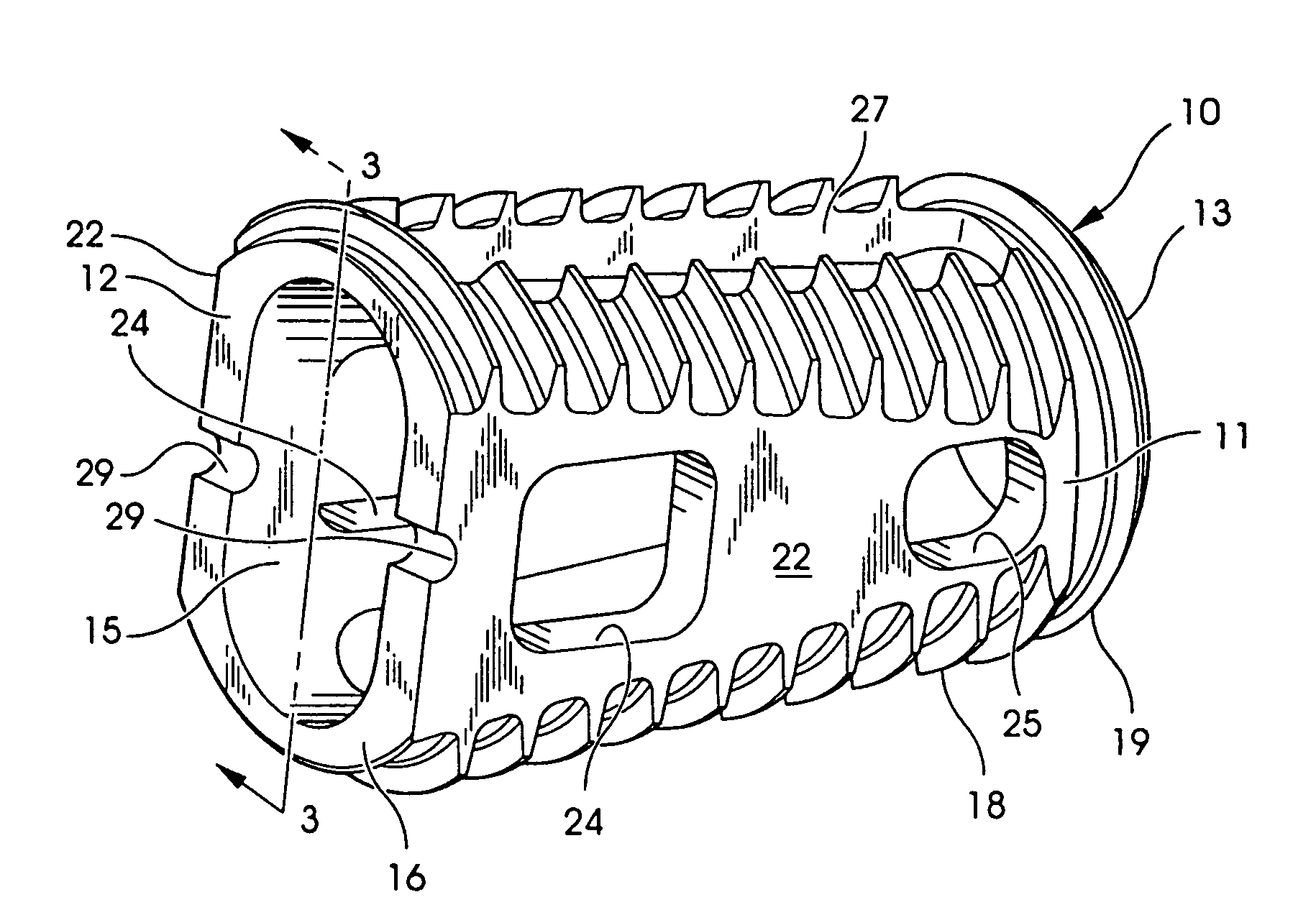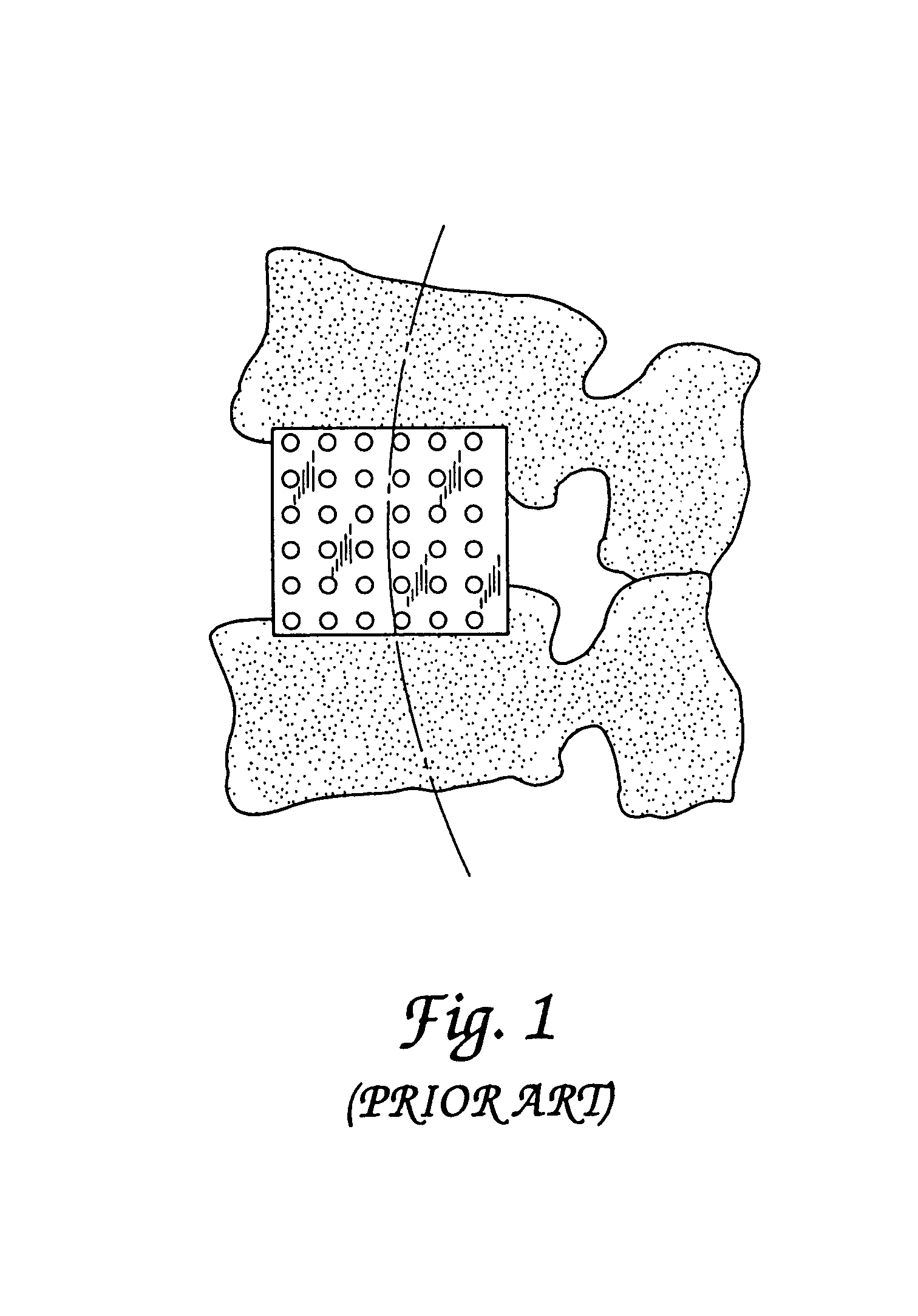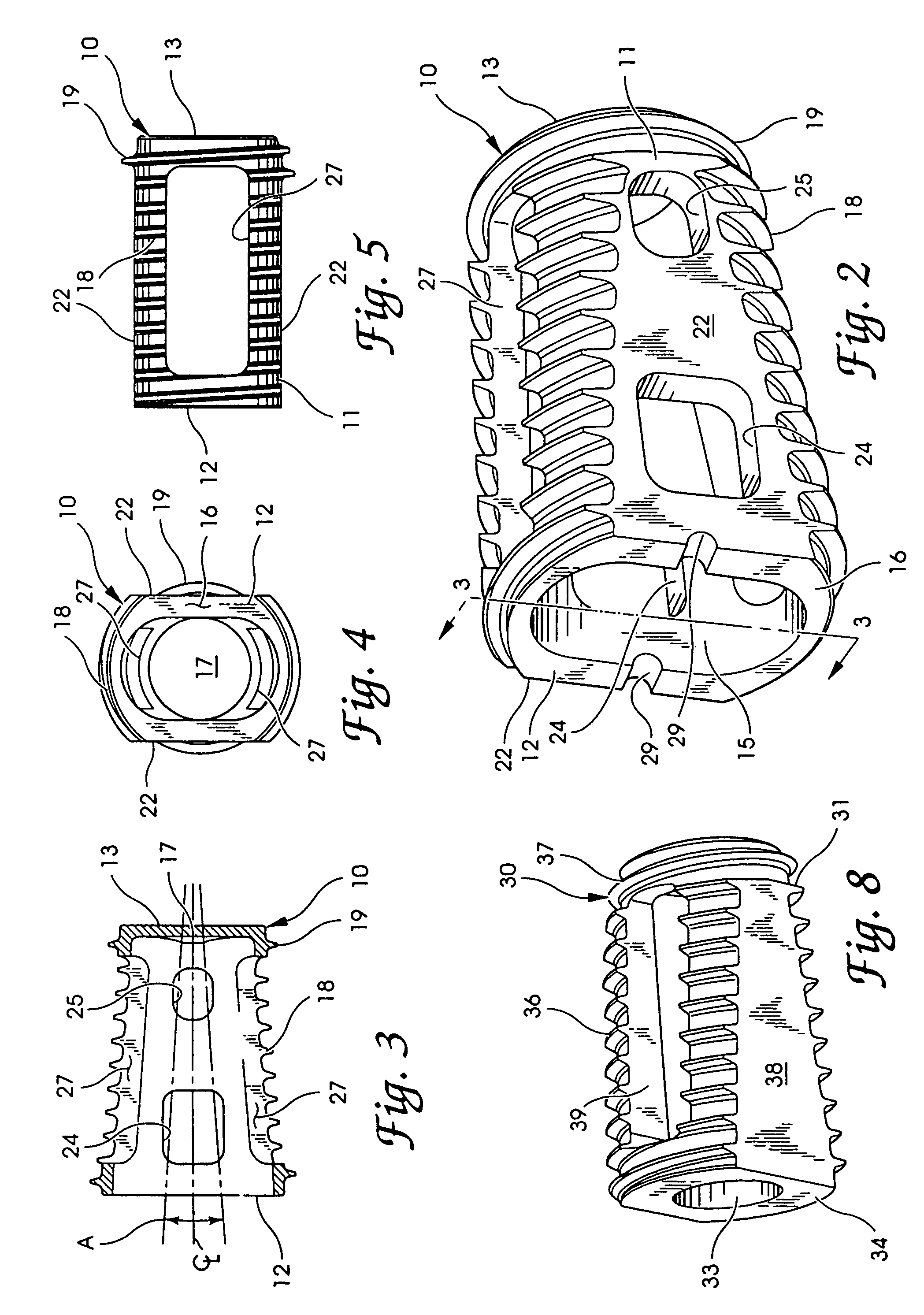Interbody fusion device and method for restoration of normal spinal anatomy
a fusion device and spinal column technology, applied in the direction of internal osteosynthesis, osteosynthesis devices, prosthesis, etc., can solve the problems of inconvenient surgical procedures, inconvenient fusion, and inability to maintain the stability of the segment, etc., to achieve the effect of restoring normal spinal anatomy, avoiding the need for a rod or plate to stabilize the level during fusion, and avoiding the need for a rod or plate to be implanted
- Summary
- Abstract
- Description
- Claims
- Application Information
AI Technical Summary
Benefits of technology
Problems solved by technology
Method used
Image
Examples
Embodiment Construction
[0033]For the purposes of promoting an understanding of the principles of the invention, reference will now be made to the embodiments illustrated in the drawings and specific language will be used to describe the same. It will nevertheless be understood that no limitation of the scope of the invention is thereby intended, such alterations and further modifications in the illustrated device, and such further applications of the principles of the invention as illustrated therein being contemplated as would normally occur to one skilled in the art to which the invention relates.
[0034]An interbody fusion device 10 in accordance with one aspect of the present invention is shown in FIGS. 2-5. The device is formed by a solid conical body 11, that is preferably formed of a biocompatible or inert material. For example, the body 11 can be made of a medical grade stainless steel or titanium, or other suitable material having adequate strength characteristics set forth herein. The device may a...
PUM
| Property | Measurement | Unit |
|---|---|---|
| height | aaaaa | aaaaa |
| diameter | aaaaa | aaaaa |
| angle | aaaaa | aaaaa |
Abstract
Description
Claims
Application Information
 Login to View More
Login to View More - R&D
- Intellectual Property
- Life Sciences
- Materials
- Tech Scout
- Unparalleled Data Quality
- Higher Quality Content
- 60% Fewer Hallucinations
Browse by: Latest US Patents, China's latest patents, Technical Efficacy Thesaurus, Application Domain, Technology Topic, Popular Technical Reports.
© 2025 PatSnap. All rights reserved.Legal|Privacy policy|Modern Slavery Act Transparency Statement|Sitemap|About US| Contact US: help@patsnap.com



